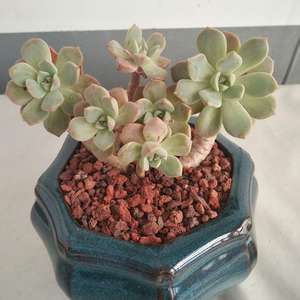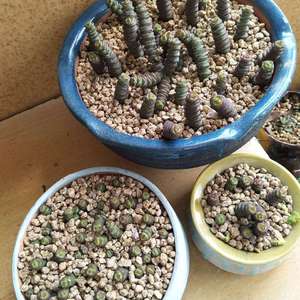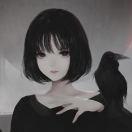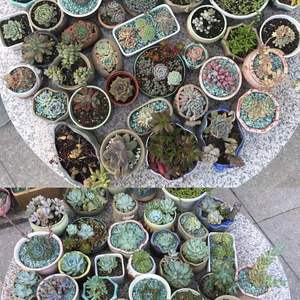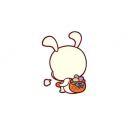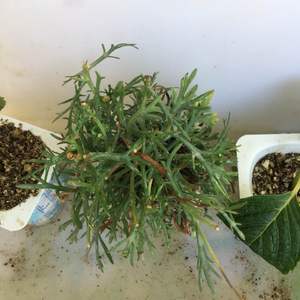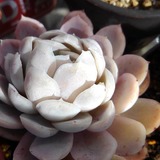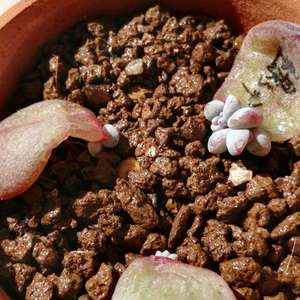文章
Miss Chen
2018年06月04日

Description: This wildflower is a winter or spring annual about 1-3' tall. Initially, a low rosette of basal leaves is formed, but later there develops an erect central stem that is unbranched below and dichotomously branched above. The central and upper stems are light green, terete or angular, and either glabrous or lined with short fine hairs. The basal leaves are up to 2½" long and ¾" across; they are medium green, glabrous, oblanceolate, and smooth along their margins. The cauline leaves (up to 3" long & 1"Clusters of Flowers across) occur in opposite pairs along the central and upper stems, where they are either sessile or clasp the stems slightly. The lower cauline leaves are oblong and smooth along the margins (see Lower Leaves), while the upper cauline leaves are lanceolate with lower teeth that are dentate. Like the basal leaves, the cauline leaves are medium green and glabrous; sometimes they are slightly ciliate along their margins. The upper stems terminate in flat-headed clusters (or dense cymes) of white flowers; each cluster spans about ½–1½" across. There is a pair of small leafy bracts where the stalks of the inflorescence dichotomously branch; these bracts are lanceolate in shape. Each flower has a small funnelform corolla with 5 spreading lobes; this corolla is white and spans about 1/6" (4 mm.) across. At the base of the flower, there is a small green calyx with 5 teeth; this calyx is much shorter than the corolla. Exerted from the corolla, there are 3 stamens and a single style. The blooming period occurs during late spring to early summer and lasts about 3 weeks. The flowers are very fragrant. Each flower is replaced by a 3-celled fruit spanning about 3 mm. long and 2 mm. across (size is variable); one cell contains a single seed, while the remaining cells are empty. An empty cell is about the same size as the fertile cell; the shape of a 3-celled fruit is globoid-angular, rather than sharply triangular. This wildflower occasionally forms loose colonies of plants.
Cultivation: The preference is partial sun or dappled sunlight, consistently moist conditions, and soil containing organic matter along with some sand or rocky material. Most growth and development occurs during the spring. The seed can remain viable in the ground for about 5 years.
Range & Habitat: Northern Corn Salad is rare in Illinois, occurring in three NE counties and two counties in the southern half of the state (see Distribution Map). It is native and state-listed as 'endangered.' This species is slightly more common in Indiana. Habitats include bottomland meadows in sandstone canyons, springs at the base of cliffs, rocky banks along woodland streams, and sandy slopes in wooded areas. In Illinois, this species is found in high quality natural areas, although it has been found in fields, roadsides, and other disturbed habitats in other states.
Faunal Associations: Little is known about floral-faunal relationships for this species. The nectar of the flowers probably attracts bees and occasional butterflies. The foliage of Valerianella spp. is readily eaten by cattle and probably other mammalian herbivores. The European species, Valerianella locusta (Mâche, Lamb's Lettuce), is cultivated as a source of salad greens for humans; it has blue flowers.

Photographic Location: A bottomland meadow in a sandstone canyon at the Portland Arch in west-central Indiana.
Comments: This is one of the more attractive Valerianella spp. because its flowers are larger than average in size and they are very fragrant. This is also one of the taller species in this genus. Another species with similar-sized flowers, Valerianella chenopodifolia (Great Lakes Corn Salad), differs by having fruits that are sharply triangular in cross-section; like Northern Corn Salad, it is quite rare in Illinois. Authorities differ on how the variations of Northern Corn Salad should be classified. Mohlenbrock (2002) divides Northern Corn Salad into three different species: Valerianella intermedia, Valerianella patellaria, and Valerianella umbilicata. This tripartite division is based on minute variations in the size and shape of the fruits. Other authors (Yatskievych, 2000; Kartez, 1994) consider such variations insignificant and recognize only Valerianella umbilicata as a valid species. Another common name of Valerianella umbilicata is Navel-Fruited Corn Salad.
Cultivation: The preference is partial sun or dappled sunlight, consistently moist conditions, and soil containing organic matter along with some sand or rocky material. Most growth and development occurs during the spring. The seed can remain viable in the ground for about 5 years.
Range & Habitat: Northern Corn Salad is rare in Illinois, occurring in three NE counties and two counties in the southern half of the state (see Distribution Map). It is native and state-listed as 'endangered.' This species is slightly more common in Indiana. Habitats include bottomland meadows in sandstone canyons, springs at the base of cliffs, rocky banks along woodland streams, and sandy slopes in wooded areas. In Illinois, this species is found in high quality natural areas, although it has been found in fields, roadsides, and other disturbed habitats in other states.
Faunal Associations: Little is known about floral-faunal relationships for this species. The nectar of the flowers probably attracts bees and occasional butterflies. The foliage of Valerianella spp. is readily eaten by cattle and probably other mammalian herbivores. The European species, Valerianella locusta (Mâche, Lamb's Lettuce), is cultivated as a source of salad greens for humans; it has blue flowers.

Photographic Location: A bottomland meadow in a sandstone canyon at the Portland Arch in west-central Indiana.
Comments: This is one of the more attractive Valerianella spp. because its flowers are larger than average in size and they are very fragrant. This is also one of the taller species in this genus. Another species with similar-sized flowers, Valerianella chenopodifolia (Great Lakes Corn Salad), differs by having fruits that are sharply triangular in cross-section; like Northern Corn Salad, it is quite rare in Illinois. Authorities differ on how the variations of Northern Corn Salad should be classified. Mohlenbrock (2002) divides Northern Corn Salad into three different species: Valerianella intermedia, Valerianella patellaria, and Valerianella umbilicata. This tripartite division is based on minute variations in the size and shape of the fruits. Other authors (Yatskievych, 2000; Kartez, 1994) consider such variations insignificant and recognize only Valerianella umbilicata as a valid species. Another common name of Valerianella umbilicata is Navel-Fruited Corn Salad.
0
0
文章
Miss Chen
2018年06月04日

Description: This perennial wildflower is 1½–3' tall and unbranched or sparingly branched. The stout central stem is erect, medium green, hairless, and terete. Basal leaves are usually cordate or oval-cordate with long petioles; sometimes they are odd-pinnate with 2 small lateral leaflets and a large terminal leaflet. The cauline leaves occur in opposite pairs along the stem and they are odd-pinnate with 3-7 leaflets. Each cauline leaf is up to 8" long and 4" across. The leaflets are more or less ovate in shape; the terminal leaflet is larger than than the lateral leaflets. The leaflets are medium green, hairless, and smooth to slightly dentate along their margins. Each cauline leaf is sessile at the base, or it has a short petiole. The central stem terminates in a short dense panicle of flowers that becomes more elongated with age. Much smaller panicles of flowers may develop from the axils of the upper leaves. Each flower has a slender funnelform corolla with 5 spreading lobes; this corolla is white to light pink and about ½–¾" long. Exerted from each corolla, there are 3 stamens and a slender style. At the base of the flower, there is a green calyx that is much shorter than the corolla.
The blooming period occurs from late spring to early summer and lasts about a month. Each flower has a single-celled ovary that produces a single achene. Each achene has a tuft of plume-like hairs; the achenes are distributed in part by the wind. The root system is fibrous and its produces occasional rhizomes or stolons. Sometimes small colonies of plants develop from the rhizomes or stolons.
Cultivation: The preference is light shade to partial sun, consistently moist conditions, and fertile soil with abundant organic matter. The foliage is rarely bothered by disease or insects.
Range & Habitat: The native Large-Flowered Valerian is occasional in extreme east-central, southeast, and southern Illinois; elsewhere in the state, it is largely absent (see Distribution Map). Illinois lies at the western range-limit for this species. Habitats include floodplain woodlands along streams or rivers, shaded ravines, and bottoms of rocky canyons. This species is found in high quality habitats that are moist and shady.

Faunal Associations: Information about floral-faunal relationships for this species is very limited. The long slender corollas suggests that the flowers are pollinated by bumblebees, butterflies, Sphinx moths, and possibly hummingbirds. The nectar of the flowers is inaccessible to most insects with short mouthparts.
Photographic Location: The wooded bottom of a sandstone canyon at The Portland Arch in west-central Indiana. In the flowerhead close-up, most of the flowers are still in the bud stage.
Comments: This is the showiest Valeriana sp. in Illinois. Its flowers exceed ½" in length, while the flowers of other native and naturalized Valeriana spp. are less than ½" in length. Large-Flowered Valerian should be cultivated more often. Sometimes, this species is called Pink-Flowered Valerian.
The blooming period occurs from late spring to early summer and lasts about a month. Each flower has a single-celled ovary that produces a single achene. Each achene has a tuft of plume-like hairs; the achenes are distributed in part by the wind. The root system is fibrous and its produces occasional rhizomes or stolons. Sometimes small colonies of plants develop from the rhizomes or stolons.
Cultivation: The preference is light shade to partial sun, consistently moist conditions, and fertile soil with abundant organic matter. The foliage is rarely bothered by disease or insects.
Range & Habitat: The native Large-Flowered Valerian is occasional in extreme east-central, southeast, and southern Illinois; elsewhere in the state, it is largely absent (see Distribution Map). Illinois lies at the western range-limit for this species. Habitats include floodplain woodlands along streams or rivers, shaded ravines, and bottoms of rocky canyons. This species is found in high quality habitats that are moist and shady.

Faunal Associations: Information about floral-faunal relationships for this species is very limited. The long slender corollas suggests that the flowers are pollinated by bumblebees, butterflies, Sphinx moths, and possibly hummingbirds. The nectar of the flowers is inaccessible to most insects with short mouthparts.
Photographic Location: The wooded bottom of a sandstone canyon at The Portland Arch in west-central Indiana. In the flowerhead close-up, most of the flowers are still in the bud stage.
Comments: This is the showiest Valeriana sp. in Illinois. Its flowers exceed ½" in length, while the flowers of other native and naturalized Valeriana spp. are less than ½" in length. Large-Flowered Valerian should be cultivated more often. Sometimes, this species is called Pink-Flowered Valerian.
0
0
文章
Miss Chen
2018年06月04日

Description: This herbaceous perennial plant is about 1-2' tall. In mature plants, the central stem divides into 2 or 3 side stems, while immature plants usually remain undivided. The upper portion of each plant tends to nod downward because of the weight of the leaves and flowers. The terete stems are glabrous and glaucous; they are light green or pale reddish green. The alternate leaves are up to 6" long and 2" across. They are oblong-ovate to elliptic, smooth along their margins, and parallel-veined. The base of each leaf is perfoliate – it completely surrounds the stem. The upper surface of each leaf is pale green to green and glabrous, while the lower surface is white to greenish white and finely short-pubescent (canescent). In mature plants, each side stem terminates with a single flower that has an elongated bell-like shape.
The flowers are about 1-2" long and they hang downward from slender pedicels about 1" long. The pedicels are similar to the stems, except they are more slender. Each flower consists of 6 pale yellow to yellow tepals, 6 stamens, and a pistil with a tripartite style. The slender tepals are slightly twisted and greenish toward the base of the flower, while their interior surface is smooth and hairless. The yellow anthers of the stamens are large and elongated, but they remain mostly hidden by the tepals. The blooming period occurs during the mid-spring and lasts about 2 weeks. The flowers are slightly fragrant. Each flower is replaced by a 3-celled seed capsule that is obovoid in shape with 3 rounded lobes and a rounded tip; each cell of this capsule contains several seeds. The root system is rhizomatous, from which vegetative offsets are often produced. This plant occasionally forms colonies.

Cultivation: The preference is dappled sunlight during the spring and light shade during the summer. The soil should be moderately moist and loamy with a layer of decaying leaves. It is best to locate this plant underneath a deciduous tree that does not cast heavy shade during the summer. It is easier to start new plants from divisions, rather than by seeds.
Range & Habitat: The native Large-Flowered Bellwort occurs occasionally in most areas of Illinois, except for a few counties in southern part of the state (see Distribution Map). Populations of this wildflower have declined somewhat because of deer-browsing, habitat destruction, invasion of various non-native shrubs, and invasion of Garlic Mustard (Alliaria petiolata). Habitats include mesic deciduous woodlands, wooded slopes, large river banks in wooded areas, and edges of shady seeps. The presence of this plant in a deciduous woodlands is an indication that much of the original ground flora is still intact.

Faunal Associations: Bumblebees, mason bees (Osmia spp.), Halictid bees (Halictus spp., Lasioglossum spp.), and Andrenid bees (Andrena spp.) suck nectar or collect pollen from the flowers. The seeds are distributed by ants because of their attached elaiosomes (small food bodies). The foliage is heavily grazed by deer; this species declines in abundance when there is an overpopulation of deer in wooded areas. The foliage is probably vulnerable to other mammalian herbivores as well.
Photographic Location: A deciduous woodland along a river bank at Allerton Park in Piatt County, Illinois.

Comments: The flowers are rather shy and often hide behind the leaves. The foliage of Large-Flowered Bellwort (Uvularia grandiflora) is attractive and resembles the foliage of Polygonatum commutatum (Smooth Solomon's Seal). However, the leaves of the latter species are sessile or clasping, while the leaves of Large-Flowered Bellwort are perfoliate. The only other species in this genus that occurs in Illinois (the southern part only) is Uvularia sessilifolia (Sessile-Leaved Bellwort). As the name suggests, the leaves of this species are sessile, rather than perfoliate, and its flowers are a little smaller than those of Large-Flowered Bellwort. The 3-celled seed capsules of this species are sharply lobed (even winged), while the corresponding lobes of Large-Flowered Bellwort are well-rounded. Another species in this genus, Uvularia perfoliata (Perfoliate Bellwort), occurs in areas to the east of Illinois. This species has perfoliate leaves like Large-Flowered Bellwort. However, its seed capsules are truncated at their tips and its tepals have glandular hairs on the interior surface. Large-Flowered Bellwort has seed capsules with rounded tips and its tepals are smooth on the interior surface.
The flowers are about 1-2" long and they hang downward from slender pedicels about 1" long. The pedicels are similar to the stems, except they are more slender. Each flower consists of 6 pale yellow to yellow tepals, 6 stamens, and a pistil with a tripartite style. The slender tepals are slightly twisted and greenish toward the base of the flower, while their interior surface is smooth and hairless. The yellow anthers of the stamens are large and elongated, but they remain mostly hidden by the tepals. The blooming period occurs during the mid-spring and lasts about 2 weeks. The flowers are slightly fragrant. Each flower is replaced by a 3-celled seed capsule that is obovoid in shape with 3 rounded lobes and a rounded tip; each cell of this capsule contains several seeds. The root system is rhizomatous, from which vegetative offsets are often produced. This plant occasionally forms colonies.

Cultivation: The preference is dappled sunlight during the spring and light shade during the summer. The soil should be moderately moist and loamy with a layer of decaying leaves. It is best to locate this plant underneath a deciduous tree that does not cast heavy shade during the summer. It is easier to start new plants from divisions, rather than by seeds.
Range & Habitat: The native Large-Flowered Bellwort occurs occasionally in most areas of Illinois, except for a few counties in southern part of the state (see Distribution Map). Populations of this wildflower have declined somewhat because of deer-browsing, habitat destruction, invasion of various non-native shrubs, and invasion of Garlic Mustard (Alliaria petiolata). Habitats include mesic deciduous woodlands, wooded slopes, large river banks in wooded areas, and edges of shady seeps. The presence of this plant in a deciduous woodlands is an indication that much of the original ground flora is still intact.

Faunal Associations: Bumblebees, mason bees (Osmia spp.), Halictid bees (Halictus spp., Lasioglossum spp.), and Andrenid bees (Andrena spp.) suck nectar or collect pollen from the flowers. The seeds are distributed by ants because of their attached elaiosomes (small food bodies). The foliage is heavily grazed by deer; this species declines in abundance when there is an overpopulation of deer in wooded areas. The foliage is probably vulnerable to other mammalian herbivores as well.
Photographic Location: A deciduous woodland along a river bank at Allerton Park in Piatt County, Illinois.

Comments: The flowers are rather shy and often hide behind the leaves. The foliage of Large-Flowered Bellwort (Uvularia grandiflora) is attractive and resembles the foliage of Polygonatum commutatum (Smooth Solomon's Seal). However, the leaves of the latter species are sessile or clasping, while the leaves of Large-Flowered Bellwort are perfoliate. The only other species in this genus that occurs in Illinois (the southern part only) is Uvularia sessilifolia (Sessile-Leaved Bellwort). As the name suggests, the leaves of this species are sessile, rather than perfoliate, and its flowers are a little smaller than those of Large-Flowered Bellwort. The 3-celled seed capsules of this species are sharply lobed (even winged), while the corresponding lobes of Large-Flowered Bellwort are well-rounded. Another species in this genus, Uvularia perfoliata (Perfoliate Bellwort), occurs in areas to the east of Illinois. This species has perfoliate leaves like Large-Flowered Bellwort. However, its seed capsules are truncated at their tips and its tepals have glandular hairs on the interior surface. Large-Flowered Bellwort has seed capsules with rounded tips and its tepals are smooth on the interior surface.
0
0
文章
Miss Chen
2018年06月04日

Description: This perennial wildflower is 2–3½' tall and unbranched. The central stem is light green, terete, and pubescent. Pairs of opposite leaves occur at intervals along this stem; each pair of leaves rotates 90º from the orientation of the preceding pair of leaves. The leaves are up to 8" long and 4" across, ovate or ovate-oblong in shape, and smooth to slightly undulate along their margins. All or most leaves have winged bases that surround the stem and merge with the bases of the leaves on the opposite side. The upper surfaces of the leaves are dull green and hairless to slightly pubescent, while their lower surfaces are whitish green and covered with short fine pubescence. Sessile clusters of 1-5 flowers occur in the axils of the leaves. Each flower has a narrow tubular corolla (about ½" long); usually this corolla is reddish brown (less often, it is more green or yellow). The corolla has 5 lobes that are short and well-rounded. The 5 sepals are about the same length as the corolla and linear in shape; they are light green to dark reddish brown. At the base of each flower, there is a 3-celled ovary that is green and hairy, and a pair of linear stipules that resemble the sepals. Within the corolla, there are 5 stamens and a single style with a knobby green stigma.
The blooming period occurs from late spring to mid-summer and lasts about a month. Each flower is replaced by a dry drupe about 1/3" (8 mm.) across that is globoid in shape and becomes orange at maturity. Inside each drupe, there are 3 black nutlets; these nutlets are 3-angled and oblongoid in shape. The root system consists of a taproot. This wildflower spreads by reseeding itself.
Cultivation: The preference is light shade to dappled sunlight, mesic to slightly dry conditions, and a loamy or rocky soil with abundant organic matter.
Range & Habitat: Late Horse Gentian is occasional in central and northern Illinois, becoming uncommon or absent in southern areas of the state (see Distribution Map). This is a native wildflower. Habitats include upland deciduous woodlands, rocky wooded slopes, thinly wooded bluffs, oak savannas, and limestone glades.

Faunal Associations: The nectar of the flowers attracts long-tongued bees, especially bumblebees (Bombus spp.) and Anthophorid bees (Anthophora spp.). Smaller short-tongued bees may visit the flowers, but they are less effective at cross-pollination. The caterpillars of the moth Hemaris diffinis (Snowberry Clearwing) feed on Triosteum spp. (Horse Gentians) and other members of the Honeysuckle family. Sometimes White-Tailed Deer chomp off the upper half of the central stem and its leaves.
Photographic Location: An upland oak woodland in McLean County, Illinois.
Comments: Late Horse Gentian is easily distinguished from other species of Horse Gentian (Triosteum spp.) by its stem-surrounding opposite leaves (they are connate-perfoliate). Other species in this genus have opposite leaves that taper to narrow bases that are little wider than the central stem. Except for this difference in their leaves, Late Horse Gentian is very similar in appearance to Early Horse Gentian (Triosteum aurantiacum) and they prefer similar habitats. Another species, Triosteum angustifolium (Yellow-Flowered Horse Gentian), has yellow flowers and more narrow leaves; its state distribution is restricted to southern Illinois.
The blooming period occurs from late spring to mid-summer and lasts about a month. Each flower is replaced by a dry drupe about 1/3" (8 mm.) across that is globoid in shape and becomes orange at maturity. Inside each drupe, there are 3 black nutlets; these nutlets are 3-angled and oblongoid in shape. The root system consists of a taproot. This wildflower spreads by reseeding itself.
Cultivation: The preference is light shade to dappled sunlight, mesic to slightly dry conditions, and a loamy or rocky soil with abundant organic matter.
Range & Habitat: Late Horse Gentian is occasional in central and northern Illinois, becoming uncommon or absent in southern areas of the state (see Distribution Map). This is a native wildflower. Habitats include upland deciduous woodlands, rocky wooded slopes, thinly wooded bluffs, oak savannas, and limestone glades.

Faunal Associations: The nectar of the flowers attracts long-tongued bees, especially bumblebees (Bombus spp.) and Anthophorid bees (Anthophora spp.). Smaller short-tongued bees may visit the flowers, but they are less effective at cross-pollination. The caterpillars of the moth Hemaris diffinis (Snowberry Clearwing) feed on Triosteum spp. (Horse Gentians) and other members of the Honeysuckle family. Sometimes White-Tailed Deer chomp off the upper half of the central stem and its leaves.
Photographic Location: An upland oak woodland in McLean County, Illinois.
Comments: Late Horse Gentian is easily distinguished from other species of Horse Gentian (Triosteum spp.) by its stem-surrounding opposite leaves (they are connate-perfoliate). Other species in this genus have opposite leaves that taper to narrow bases that are little wider than the central stem. Except for this difference in their leaves, Late Horse Gentian is very similar in appearance to Early Horse Gentian (Triosteum aurantiacum) and they prefer similar habitats. Another species, Triosteum angustifolium (Yellow-Flowered Horse Gentian), has yellow flowers and more narrow leaves; its state distribution is restricted to southern Illinois.
0
0
文章
Miss Chen
2018年05月29日

Description: This wildflower is a herbaceous perennial about 2-3½' tall that is unbranched. The central stem is light green, rather stout, terete, and glandular-pubescent. Pairs of opposite leaves occur along the entire length of the stem. These leaves are 4-8" long and 1½-3½" across; they are narrowly ovate to ovate in shape and their margins are smooth to slightly undulate. The leaves taper to winged sessile bases; they are not connate-perfoliate (merged together at their bases and surrounding the stem). Upper leaf surfaces are yellowish green to reddish green and glabrous to sparsely short-pubescent, while their lower surfaces are pale or whitish green and densely canescent. Some glandular hairs are usually present on the leaves. Leaf venation is pinnate; networks of secondary veins are prominent on the leaf undersides. Axillary flowers appear at the bases of lower-middle to upper leaves; they are sessile (or nearly so), occurring as either solitary flowers or in small clusters.
Each flower is ½-¾" long, consisting of of tubular corolla that is dull red to purplish red, 5 reddish green to reddish purple sepals, an inferior ovary with a single style, and 5 inserted stamens. Along its upper rim, the corolla has 5 short lobes that are rounded and erect. The sepals are about the same length as the corolla; there are linear in shape, short pubescent, and persistent. The style is about the same length as the corolla or slightly longer; it has a swollen green stigma at its tip. The blooming period occurs from late spring to early summer, lasting about 1-2 months. Only a few flowers are in bloom at the same time. Afterwards, the flowers are replaced by 3-celled fruits that become about ½" long at maturity. Mature fruits are orange to orange-red, ovoid-globoid in shape, and glandular-pubescent; their flesh is dry and mealy. Each fruit contains 3 bony seeds that are bluntly 3-angled and oblongoid in shape. The root system consists of a taproot.
Cultivation: The preference is light shade to partial sun, mesic to dry-mesic conditions, and soil containing loam, rocky loam, or glacial till with decaying organic matter.

Range & Habitat: The native Early Horse Gentian (Triosteum aurantiacum aurantiacum) is occasional in central and northern Illinois, while in the southern section of the state it is rare or absent (see Distribution Map). Habitats include mesic to upland woodlands, wooded slopes, open woodlands, partially shaded banks of rivers and lakes, thickets, and prairies (including the bases or edges of hill prairies). Occasional wildfires or other disturbance is beneficial when it reduces excessive shade from overhead canopy trees. This wildflower is found in average to high-quality natural areas.
Faunal Associations: The flowers are cross-pollinated by long-tongued bees, including bumblebees and Anthophorid bees (Anthophora spp.). These insects mostly suck nectar from the flowers; smaller bees also collect pollen. The caterpillars of a moth, Phyllonorycter mariaeella, feed on Triosteum spp. (Horse Gentians); they are tentiform leaf-miners.
Photographic Location: The Coneflower Hill Prairie near Lake Shelbyville in Illinois.

Comments: This is the typical variety of Early Horse Gentian (Triosteum aurantiacum aurantiacum); it is also called Orange-Fruited Horse Gentian. Unlike the similar Illinois Horse Gentian (Triosteum aurantiacum illinoense), Early Horse Gentian has some glandular-pubescence on its stems (not to mention its leaves and fruits). Illinois Horse Gentian differs by having non-glandular hairs on its stems that are somewhat longer (exceeding 0.5 mm. in length). These two varieties are about equally common within the state and they prefer similar habitats. Another native species, Late Horse Gentian (Triosteum perfoliatum), differs by having pairs of opposite leaves that merge together and surround the stem (i.e., they are connate-perfoliate); it is found throughout the state. Yet another native species, Yellow Horse Gentian (Triosteum angustifolium), differs by having yellow flowers and its leaves are more narrow than those of either Early Horse Gentian or Illinois Horse Gentian. Yellow Horse Gentian occurs in southern Illinois, while in the rest of the state it is absent.
Each flower is ½-¾" long, consisting of of tubular corolla that is dull red to purplish red, 5 reddish green to reddish purple sepals, an inferior ovary with a single style, and 5 inserted stamens. Along its upper rim, the corolla has 5 short lobes that are rounded and erect. The sepals are about the same length as the corolla; there are linear in shape, short pubescent, and persistent. The style is about the same length as the corolla or slightly longer; it has a swollen green stigma at its tip. The blooming period occurs from late spring to early summer, lasting about 1-2 months. Only a few flowers are in bloom at the same time. Afterwards, the flowers are replaced by 3-celled fruits that become about ½" long at maturity. Mature fruits are orange to orange-red, ovoid-globoid in shape, and glandular-pubescent; their flesh is dry and mealy. Each fruit contains 3 bony seeds that are bluntly 3-angled and oblongoid in shape. The root system consists of a taproot.
Cultivation: The preference is light shade to partial sun, mesic to dry-mesic conditions, and soil containing loam, rocky loam, or glacial till with decaying organic matter.

Range & Habitat: The native Early Horse Gentian (Triosteum aurantiacum aurantiacum) is occasional in central and northern Illinois, while in the southern section of the state it is rare or absent (see Distribution Map). Habitats include mesic to upland woodlands, wooded slopes, open woodlands, partially shaded banks of rivers and lakes, thickets, and prairies (including the bases or edges of hill prairies). Occasional wildfires or other disturbance is beneficial when it reduces excessive shade from overhead canopy trees. This wildflower is found in average to high-quality natural areas.
Faunal Associations: The flowers are cross-pollinated by long-tongued bees, including bumblebees and Anthophorid bees (Anthophora spp.). These insects mostly suck nectar from the flowers; smaller bees also collect pollen. The caterpillars of a moth, Phyllonorycter mariaeella, feed on Triosteum spp. (Horse Gentians); they are tentiform leaf-miners.
Photographic Location: The Coneflower Hill Prairie near Lake Shelbyville in Illinois.

Comments: This is the typical variety of Early Horse Gentian (Triosteum aurantiacum aurantiacum); it is also called Orange-Fruited Horse Gentian. Unlike the similar Illinois Horse Gentian (Triosteum aurantiacum illinoense), Early Horse Gentian has some glandular-pubescence on its stems (not to mention its leaves and fruits). Illinois Horse Gentian differs by having non-glandular hairs on its stems that are somewhat longer (exceeding 0.5 mm. in length). These two varieties are about equally common within the state and they prefer similar habitats. Another native species, Late Horse Gentian (Triosteum perfoliatum), differs by having pairs of opposite leaves that merge together and surround the stem (i.e., they are connate-perfoliate); it is found throughout the state. Yet another native species, Yellow Horse Gentian (Triosteum angustifolium), differs by having yellow flowers and its leaves are more narrow than those of either Early Horse Gentian or Illinois Horse Gentian. Yellow Horse Gentian occurs in southern Illinois, while in the rest of the state it is absent.
0
0
文章
Miss Chen
2018年05月29日

Description: This herbaceous wildflower is 5-12" tall, consisting of a single stem and a whorl of 3 spreading leaves at its apex. The central stem is purplish green or maroon, terete, glabrous, and rather stout. Individual leaves are 3-4" long and 2-3½" across; they are ovate or oval, smooth along their margins, sessile, glabrous, and parallel-veined. The upper leaf surface is medium green or mottled green (a mixture of both light green and medium green). The leaf bases are rounded and their tips are usually blunt.
On a mature plant, a single sessile flower develops on top of the whorl of leaves. Individual flowers consist of 3 dark maroon petals about ¾-1¼" long (rarely greenish yellow or brown), 3 green or purplish green sepals about ½-1" long, 6 stamens about ½-¾" long, and an angular superior ovary with 3 recurved stigmata at its apex. The erect petals are narrowly elliptic to elliptic in shape. The sepals are narrowly lanceolate and widely spreading to slightly ascending; they lie above the plane of the leaves. The anthers have dark maroon and yellow stripes; they are much longer than the filaments. The blooming period occurs from mid- to late spring, lasting about 3 weeks. The flowers usually have a slight aroma of rotting meat. Each flower is replace by a dry 3-celled fruit that is whitish to purplish green. The fruit splits open to release the seeds. The root system consists of a stout rhizome and secondary fibrous roots. Clonal offsets occasionally develop from the rhizome.Distribution Map
Cultivation: The preference is dappled sunlight to light shade during the spring; during the summer, more shade is tolerated. The soil should be moist, rich, and loamy with abundant organic matter (decaying leaves, etc.). This wildflower develops slowly from seed, requiring several years to reach maturity. The seeds should be kept moist and planted as soon as possible; they are often slow to germinate. It is also possible to start plants from clonal offsets.
Range & Habitat: The native Sessile Trillium is found primarily in NE and southern Illinois, where it is uncommon. It is more common further to the east. Habitats include rich mesic woodlands, floodplain woodlands in valleys, lower slopes of shady ravines, and swamps. These habitats are dominated by such deciduous canopy trees as Sugar Maple, American Beech, American Basswood, and Green Ash. In Illinois, Sessile Trillium occurs in high quality woodlands where the original ground flora is still intact.
Faunal Associations: Robertson (1929) observed a small weevil, Centrinites strigicollis, visiting the flowers for pollen. Because of the malodorous odor and color of the petals, the flowers are probably visited by beetles and flies that are attracted to rotting flesh. The polyphagous caterpillars of two moths, Clepsis melaleucana (Black-Patched Clepsis) and Euplexia benesimilis (American Angle Shades), have been observed to feed on trilliums. The seeds are distributed by ants (and possibly some beetles), which are attracted to their elaisomes (food appendages). White-Tailed Deer readily browse on the foliage of trilliums, although Sessile Trillium may be eaten less often than some trillium species because of its dark-colored and less conspicuous flowers.
Photographic Location: A soggy area of Goff Woods Nature Preserve in NW Ohio. This woodlands is a small remnant of what was once called the 'Great Black Swamp,' which covered large areas of NW Ohio and NE Indiana.

Comments: In many ways, Sessile Trillium resembles the more common Prairie Trillium (Trillium recurvatum), which is also found in wooded habitats in Illinois. Sessile Trillium can be distinguished from the latter species by its sessile rounded leaves and widely spreading or ascending sepals, which are held above the leaves. In contrast, the leaves of Prairie Trillium taper gradually into petioles and the sepals of its flowers hang downward below the leaves. Both Sessile Trillium and Prairie Trillium can have flowers with greenish yellow petals, but this is rather uncommon. Other trilliums in Illinois have petals that are never colored dark maroon, or their flowers have conspicuous pedicels (flowering stalks). Other common names of Trillium sessile are Toadshade and Wake Robin.
On a mature plant, a single sessile flower develops on top of the whorl of leaves. Individual flowers consist of 3 dark maroon petals about ¾-1¼" long (rarely greenish yellow or brown), 3 green or purplish green sepals about ½-1" long, 6 stamens about ½-¾" long, and an angular superior ovary with 3 recurved stigmata at its apex. The erect petals are narrowly elliptic to elliptic in shape. The sepals are narrowly lanceolate and widely spreading to slightly ascending; they lie above the plane of the leaves. The anthers have dark maroon and yellow stripes; they are much longer than the filaments. The blooming period occurs from mid- to late spring, lasting about 3 weeks. The flowers usually have a slight aroma of rotting meat. Each flower is replace by a dry 3-celled fruit that is whitish to purplish green. The fruit splits open to release the seeds. The root system consists of a stout rhizome and secondary fibrous roots. Clonal offsets occasionally develop from the rhizome.Distribution Map
Cultivation: The preference is dappled sunlight to light shade during the spring; during the summer, more shade is tolerated. The soil should be moist, rich, and loamy with abundant organic matter (decaying leaves, etc.). This wildflower develops slowly from seed, requiring several years to reach maturity. The seeds should be kept moist and planted as soon as possible; they are often slow to germinate. It is also possible to start plants from clonal offsets.
Range & Habitat: The native Sessile Trillium is found primarily in NE and southern Illinois, where it is uncommon. It is more common further to the east. Habitats include rich mesic woodlands, floodplain woodlands in valleys, lower slopes of shady ravines, and swamps. These habitats are dominated by such deciduous canopy trees as Sugar Maple, American Beech, American Basswood, and Green Ash. In Illinois, Sessile Trillium occurs in high quality woodlands where the original ground flora is still intact.
Faunal Associations: Robertson (1929) observed a small weevil, Centrinites strigicollis, visiting the flowers for pollen. Because of the malodorous odor and color of the petals, the flowers are probably visited by beetles and flies that are attracted to rotting flesh. The polyphagous caterpillars of two moths, Clepsis melaleucana (Black-Patched Clepsis) and Euplexia benesimilis (American Angle Shades), have been observed to feed on trilliums. The seeds are distributed by ants (and possibly some beetles), which are attracted to their elaisomes (food appendages). White-Tailed Deer readily browse on the foliage of trilliums, although Sessile Trillium may be eaten less often than some trillium species because of its dark-colored and less conspicuous flowers.
Photographic Location: A soggy area of Goff Woods Nature Preserve in NW Ohio. This woodlands is a small remnant of what was once called the 'Great Black Swamp,' which covered large areas of NW Ohio and NE Indiana.

Comments: In many ways, Sessile Trillium resembles the more common Prairie Trillium (Trillium recurvatum), which is also found in wooded habitats in Illinois. Sessile Trillium can be distinguished from the latter species by its sessile rounded leaves and widely spreading or ascending sepals, which are held above the leaves. In contrast, the leaves of Prairie Trillium taper gradually into petioles and the sepals of its flowers hang downward below the leaves. Both Sessile Trillium and Prairie Trillium can have flowers with greenish yellow petals, but this is rather uncommon. Other trilliums in Illinois have petals that are never colored dark maroon, or their flowers have conspicuous pedicels (flowering stalks). Other common names of Trillium sessile are Toadshade and Wake Robin.
0
0
文章
Miss Chen
2018年05月29日

Description: This herbaceous perennial plant is about ½–1¼' tall. It consists of a single erect stem that has 3 spreading leaves at its apex. A mature plant produces a single sessile flower above the leaves, while an immature plant produces only leaves. The stem is light green, medium green, or yellowish green; it is terete, glabrous, and fairly stout. The leaves are up to 6" long and 3½" across; they are ovate in shape and smooth along their margins, tapering into distinct petioles. The upper leaf surface is mottled with patches of light and dark green, although sometimes it is solid green. The lower leaf surface is pale green. Both surfaces are glabrous. In addition to parallel primary veins, the leaves also have diagonal secondary veins that crisscross between the primary veins. Each flower consists of 3 yellow petals, 3 green sepals, 6 yellow stamens, and a green ovary with 3 stigmata.
The petals are 1–1¼" long, rhombic-elliptic in shape, and erect, curving inward toward their tips. The sepals are ¾-1" long, glabrous, and triangular-lanceolate in shape; they hang downward from the base of the flower. The stamens are about ½" long, curving inward toward their tips; the large anthers of the stamens are narrowly oblongoid in shape and longer than the filaments. The blooming period occurs from mid- to late spring, lasting about 3-4 weeks. There is no noticeable floral scent. Individual flowers are fairly long-lasting. Afterwards, the flowers are replaced by 3-celled fruits (technically berries) that contain many small seeds. These fruits are a little less than ½" in length (about 10 mm.), rhombic-ovoid in shape, 6-angled, and greenish. The seeds are dark brown and partially white from their food appendages. The root system consists of a thickened erect rootstock, secondary fibrous roots, and rhizomes, from which clonal offsets are occasionally produced.

Cultivation: This plant prefers dappled sunlight to medium shade, mesic levels of moisture, and rich loamy soil with decaying leaf litter. Like other Trillium spp. (Trilliums), this species is slow to develop because of the short period of active growth during the spring. The foliage persists until about the middle of summer.
Range & Habitat: The native Shay's Trillium is quite rare in Illinois. According to official records, it has been observed in only Jackson County. However, the webmaster encountered it in Champaign County a few years ago, and there has been scattered sitings of Shay's Trillium in northern Illinois (see Distribution Map). Habitats include mesic deciduous woodlands where the original flora has remained little disturbed by modern development.

Faunal Associations: The pollinators of the yellow flowers are unknown. Caterpillars of the polyphagous moths Clepsis melaleucana (Black-patched Clepsis) and Euplexia benesimilis (American Angle Shades) feed on trilliums (Covell, 1984/2005). Because of their food appendages, the seeds are distributed to new locations by ants. White-tailed Deer are very fond of the foliage and flowers of trilliums as a source of food. Their seeds can pass through the digestive tract of these animals and germinate in new locations (Vellend et al., 2003). However, too many deer can cause populations of trilliums to decline because of excessive browsing.
Photographic Location: A mesic deciduous woodland at Busey Woods in Urbana, Illinois, and a woodlands in Ogle County, Illinois. The photograph of the Shay's Trillium with mottled leaves was taken by Lisa Culp (Copyright © 2013).

Comments: Shay's Trillium (Trillium recurvatum shayii) is a rare form of the common Prairie Trillium (Trillium recurvatum). The typical form of this species has maroon flowers and black anthers. Another uncommon form of the Prairie Trillium that occurs within the state, Trillium recurvatum lutescens, has yellow flowers like Shay's Trillium, however its anthers are black or purple. In contrast, Shay's Trillium has yellow anthers. All three forms of this trillium usually have leaves that are mottled in different shades of green, however, plants with solid green leaves also occur. Regardless of its form, the Prairie Trillium differs from other trilliums in Illinois by the following set of characteristics: 1) its flowers are sessile, 2) its leaves have petioles, 3) its sepals hang downward, and 4) its petals are yellow or maroon. Other trilliums have flowers on short stalks, or their leaves are sessile, or their sepals are spreading to ascending, or their petals are white.
The petals are 1–1¼" long, rhombic-elliptic in shape, and erect, curving inward toward their tips. The sepals are ¾-1" long, glabrous, and triangular-lanceolate in shape; they hang downward from the base of the flower. The stamens are about ½" long, curving inward toward their tips; the large anthers of the stamens are narrowly oblongoid in shape and longer than the filaments. The blooming period occurs from mid- to late spring, lasting about 3-4 weeks. There is no noticeable floral scent. Individual flowers are fairly long-lasting. Afterwards, the flowers are replaced by 3-celled fruits (technically berries) that contain many small seeds. These fruits are a little less than ½" in length (about 10 mm.), rhombic-ovoid in shape, 6-angled, and greenish. The seeds are dark brown and partially white from their food appendages. The root system consists of a thickened erect rootstock, secondary fibrous roots, and rhizomes, from which clonal offsets are occasionally produced.

Cultivation: This plant prefers dappled sunlight to medium shade, mesic levels of moisture, and rich loamy soil with decaying leaf litter. Like other Trillium spp. (Trilliums), this species is slow to develop because of the short period of active growth during the spring. The foliage persists until about the middle of summer.
Range & Habitat: The native Shay's Trillium is quite rare in Illinois. According to official records, it has been observed in only Jackson County. However, the webmaster encountered it in Champaign County a few years ago, and there has been scattered sitings of Shay's Trillium in northern Illinois (see Distribution Map). Habitats include mesic deciduous woodlands where the original flora has remained little disturbed by modern development.

Faunal Associations: The pollinators of the yellow flowers are unknown. Caterpillars of the polyphagous moths Clepsis melaleucana (Black-patched Clepsis) and Euplexia benesimilis (American Angle Shades) feed on trilliums (Covell, 1984/2005). Because of their food appendages, the seeds are distributed to new locations by ants. White-tailed Deer are very fond of the foliage and flowers of trilliums as a source of food. Their seeds can pass through the digestive tract of these animals and germinate in new locations (Vellend et al., 2003). However, too many deer can cause populations of trilliums to decline because of excessive browsing.
Photographic Location: A mesic deciduous woodland at Busey Woods in Urbana, Illinois, and a woodlands in Ogle County, Illinois. The photograph of the Shay's Trillium with mottled leaves was taken by Lisa Culp (Copyright © 2013).

Comments: Shay's Trillium (Trillium recurvatum shayii) is a rare form of the common Prairie Trillium (Trillium recurvatum). The typical form of this species has maroon flowers and black anthers. Another uncommon form of the Prairie Trillium that occurs within the state, Trillium recurvatum lutescens, has yellow flowers like Shay's Trillium, however its anthers are black or purple. In contrast, Shay's Trillium has yellow anthers. All three forms of this trillium usually have leaves that are mottled in different shades of green, however, plants with solid green leaves also occur. Regardless of its form, the Prairie Trillium differs from other trilliums in Illinois by the following set of characteristics: 1) its flowers are sessile, 2) its leaves have petioles, 3) its sepals hang downward, and 4) its petals are yellow or maroon. Other trilliums have flowers on short stalks, or their leaves are sessile, or their sepals are spreading to ascending, or their petals are white.
0
0






